Yesterday, we approached the Russian Exclusive Economic Zone (EEZ) in the Chukchi Sea. The EEZ is the area in which Russia has exclusive economic rights. For example, only Russian fisherman can occupy these Russian waters to fish and make a profit. We can sample on the line, but can not proceed to sample any farther west into Russian waters without specific permission (and we don't have it!). To the East of the line is the Exclusive Economic Zone (EEZ) for the United States. Only American fisherman can fish and seek a profit in these waters. Of course, we can sample in American waters.
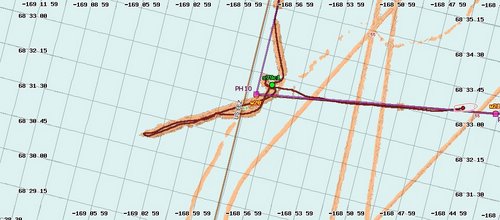
Because the United States and Russia are less than 400 miles apart, the water separating the two countries is split down the middle. When there is greater than 400 miles between two countries, each country claims the waters up to 200 miles off their coast. When the distance between Russia and the United States exceeds 400 miles, there is an area of International Waters separating the two.
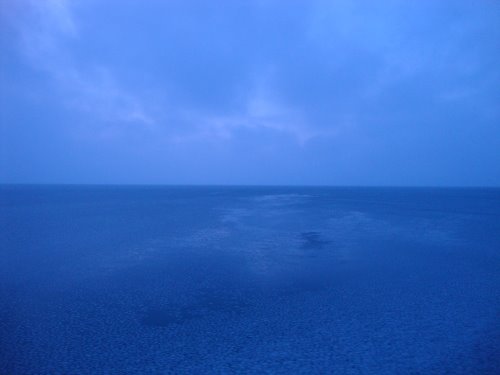
Lately, our net tows have been bringing up a LOT of ctenophores, a type of jellyfish. The first thing we do is to pick all of the ctenophores out of our sample. They EAT copepods and krill – the two animals in which we are MOST interested. Here you can see a ctenophore that has eaten a krill. The two eyes are the krill eyes from INSIDE the ctenophore.
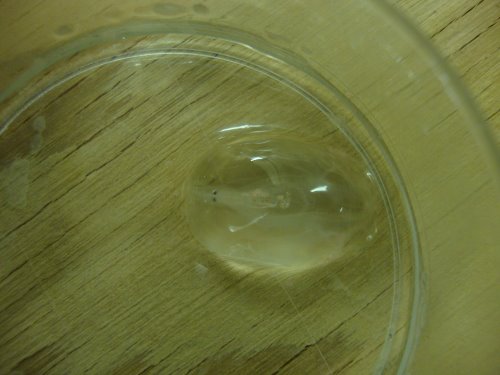
We are still operating on a Holiday schedule. Last night, there were more Morale activities; Bingo night and Pirates of the Caribbean: Strange Tides shown in the helicopter hangar. I can't imagine being away from home for seven months...that is how long it's been since the crew of the Healy has seen their families. We are getting closer to that day and you can tell!
Meet another member of the Science Team! Phil is a Research Associate II. His job allows him to support Assistant, Associate and Senior scientists and he has a fair amount of independence regarding how he does that. Phil acquired a Bachelor's Degree in Liberal Arts and then followed up with a Master's Degree in Marine Science, specializing in Marine Biology. He enjoys the freedom of speculating on a particular problem and then devising ways to conduct research to answer that question. This can entail developing a new piece of apparatus, a new method of sampling, or just observing an organism or a system and figuring out a likely answer. Travel is a bonus and he loves the outdoors. Meeting new and interesting people is always enlightening! While his field has changed dramatically since he began, his advice would be to take as much science and math as you can...however don't abandon your love of language, reading, music, etc. These passions often will help you approach a scientific question with a different type of objectivity (and they make you an interesting person, as well!). Don't be afraid to try new things and many people in my field have come to it by very different routes, not necessarily through hard science...however eventually they need to take or learn the math/science/engineering necessary to conduct research.
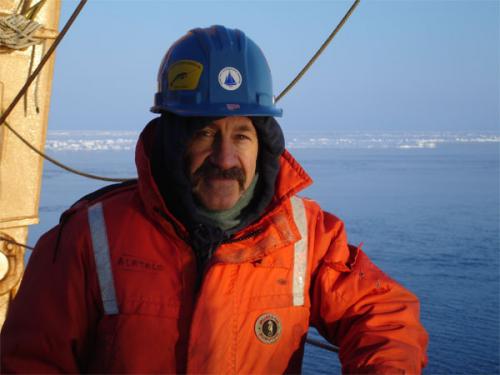
The ice/weather forecast predicted we would be in open water. You can see there is still a very thin layer of ice on the surface. I am anxious to spend some time in open water where we can be out on the deck. When we headed North, we were unable to be outside due to the Bering storms. Another beautiful Arctic winter day...
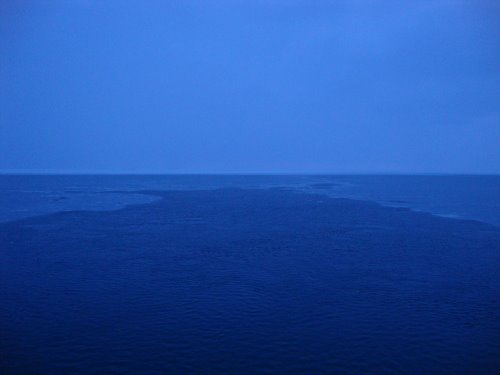
New Vocabulary
EEZ- An Exclusive Economic Zone (EEZ) is a concept adopted at the Third United Nations Conference on the Law of the Sea (1982), whereby a coastal State assumes jurisdiction over the exploration and exploitation of marine resources in its adjacent section of the continental shelf, taken to be a band extending 200 miles from the shore.
ctenophore - any marine invertebrate of the phylum Ctenophora, including the sea gooseberry and Venus's-girdle, whose body bears eight rows of fused cilia, for locomotion Also called comb jelly
Question of the Day
Explain why having an EEZ is important. What are the consequences for not following it? Cite your sources!
Stay tuned as we continue our exciting voyage on the USCG Cutter Healy. Until then...
“Live as if you were to die tomorrow. Learn as if you were to live forever” - Mohandas Gandhi


Comments